At the age of 19, Hideki Matsutake was taken on as an apprentice by Japanese synth maestro Tomita, thus beginning his relationship with the huge modular synthesizers of Dr Robert Moog.
This formative experience with Tomita proved a vital stepping stone, leading to a musical collaboration with Ryuichi Sakamoto and the creation of his own music unit LOGIC SYSTEM. The link-up saw Matsutake eventually integrated into the iconic YELLOW MAGIC ORCHESTRA as an ‘unofficial’ fourth member both in the studio and live with Sakamoto, Haruomi Hosono and Yukihiro Takahashi, working on the self-titled debut, ‘Solid State Survivor’, ‘×∞Multiplies’, ‘BGM’ and ‘Technodelic’.
In parallel, LOGIC SYSTEM released the acclaimed albums ‘Logic, ‘Venus’ and ‘Orient Express’ while also giving technical assistance to artists such as Masami Tsuchiya from IPPU DO and SANDII & THE SUNSETZ, both of whom were involved in the final concert tour of JAPAN as live guitarist and support band respectively.
With a new LOGIC SYSTEM album ‘Technasma’ being released in September 2020, here is an interview with a pioneering electronic musician who rarely speaks to the English-language music press. In the interview, Hideki-san discusses in fascinating detail his electronic music journey from the challenges of importing the first Moog modulars into Japan through to the creation of his new LOGIC SYSTEM work using a mixture of both vintage and current synthesizer equipment.
Why was Wendy Carlos’ ‘Switched on Bach’ album so important for you in becoming interested in synthesizers?
Not sure if it was important as such, but it was certainly the first time I heard the sound of synthesizer on a record. I didn’t even know what the word “synthesizer” meant. I was intrigued by the jacket when I saw ‘Switched On Bach’ in a record shop.
It had a picture of a person dressed as Bach and behind him, or I should say ‘her’ or ‘them’, was this machine with lots of knobs. Next year, I began working for (Isao) Tomita-sensei and soon discovered that he was planning to import that curious-looking machine – synthesizer – in six months. I cannot tell you how excited I was!
What do you think convinced Tomita to take you on as an assistant when you were still quite young and inexperienced?
My father was a professional sax player. He was managed by an agency called Horipro. Tomita-sensei’s brother was also working at the same agency. Tomita-sensei was about to set up his own agency around that time and his brother was going to help him. They were looking for assistants and I got introduced through my father. It was one of those happy accidents.
Legend has it that Tomita had a REALLY difficult time importing his Moog IIIp into Japan, can you explain a bit about this process and how hard it was convincing customs at the airport to release it once it had arrived in the country?
First of all, it was the time when the exchange rate was fixed – 360 yen to one US dollar, which is more than 3 times the value of today (one US dollar is about 110 yen today). Plus, instead of 10% consumption tax we have today, we had excise tax for luxury items which was very, very high. To make matters more complicated, there were no trade companies that dealt with expensive items like this in those days.
Tomita-sensei could have gone to the US, bought the Moog IIIp and brought it back himself. But that meant he would have had to fill in millions of documents for the custom.
He tried to find an easy and inexpensive solution. He even contacted a trading firm in Hong Kong to no avail. Finally, he found a Japanese company called Aska Trading which agreed to import the Moog IIIp. In fact, I also purchased my Moog IIIc through them.
Anyhow, I believe, apart from some universities, Tomita-sensei was the first person to import this kind of electronic instrument to Japan privately. Custom officers couldn’t tell what this machine was. Tomita-sensei told them it was a musical instrument, but they didn’t believe him! What made things more complicated was these knobs on the Moog – this is a true story – these knobs are exactly the same as the knobs used on the strategic bombers when they drop bombs! I swear it’s true! *laughs*
I guess that made those custom officers even more suspicious and consequently, his brand new Moog was detained at Haneda International Airport for over a week, maybe ten days. Tomita-sensei got so p*ssed off. He told them “Look, it’s a musical instrument. Why would it come with a piano-like keyboard, otherwise?”. They were still not convinced. Tomita-sensei contacted Dr Moog and asked him to send some photos of Moog IIIp with musicians actually playing it! Dr Moog sent him photos with the likes of Stevie Wonder playing Moog in the studio. Finally, that did the trick!
How did Tomita and yourself go about learning to use the Moog IIIp?
We both had to learn pretty much by ourselves. That said, there was this section called the Electronic Music Room at NHK, Japan’s national broadcaster. EMR created legendary sounds such as the electronic bells used for the opening ceremony at Tokyo Olympic Games in 1964. There was an engineer with a degree in electronics there called Professor Shiotani. He was a good friend of Tomita-sensei. So I think he learnt the basics of electronic music from him.
If you could name the most important thing that you learned from working with Tomita, what would it be?
One thing Tomita-sensei told me was, in order to create sounds on synthesizer, one needs to have a clear blueprint and palette of sounds in one’s head. Arrangements are like painting. The thing about synthesizer is it is, by nature, neutral. There’s no high or low or bright or dark when you begin creating sounds. You have to design everything. It took me a while to appreciate what he told me. It makes perfect sense now. Other than that, I had to learn pretty much everything by myself.
You got hold of your own Moog IIIc in 1972, the system was insanely expensive at the time (30 million-40 million yen?), what was the situation with the luxury tax that was placed on certain items back then?
Good God, no! It wasn’t like 30 million-40 million yen! The Moog IIIc cost about 6-7000 US dollars at the time. I added some extras so it was closer to the expensive end of the scale. So, that worked out to be about 2.5 million yen. But the luxury tax was about 200%!!! So, after commission and shipping fee, it ended up approximately 10 million yen.
How did your Moog IIIc modular system come to be named ‘Tansu’?
When you look at my Moog IIIc, on every corner of the wooden cabinets, you will find metal corner protectors attached. I was touring a lot back in the days. And every time we placed Moog IIIc back in the flight case, it got hit and gradually the corners got alarmingly damaged. One day, I attached these metal corner protectors which are typically used on a traditional Japanese cabinet or “Tansu”. It must have been around 1983 or 84, I took it to the recording studio. Someone, a session musician, asked me why I attached these protectors. I said to him to protect it. He then told me it made it look like a Tansu! *laughs*
I thought that was a cool name. I had always thought the name Moog IIIc is a bit of a mouthful to us Japanese. That’s why I began calling it ‘Tansu’.
You first came together with Ryuichi Sakamoto on ‘Thousand Knives’ in 1978, how did you work together to produce such an ambitious sound that would shape much of YMO’s early sound?
Sakamoto had a clear concept from the beginning which was to combine Asian melodies with complex Jazzy chords with lots of tension notes. Many people cover ‘Thousand Knives’ but most of them simplify chords. The original was harmonically much more complex. I believe he already had this idea when he was still a student at the Tokyo Art University. The musical complexity of ‘Thousand Knives’ led to his nickname “Kyoju (professor)”.
He wanted to produce an album with the sound of synthesizer and asked someone “who has a Moog III in Japan?”. The person told him he knew only two, Isao Tomita and Hideki Matsutake. That’s how I got to work on this album with him.
How did you discover the Roland MC8 MicroComposer and at the time, did you think a machine like this could totally change the way music would be made in the future?
I was astonished when I first heard about it! I’m not really an accomplished keyboard player so I felt I had no choice but to get it regardless of its price tag. I was still surprised when I did find out how much it cost!
But I bought it anyway, it cost 1.2 million yen! Yet, you could only programme up to 4,000 notes. I said 4,000 notes but they mean more like parameters. And each note required 3 parameters. So, in practical terms, you could only programme up to 1333 notes which really didn’t last long. It only had 2MB memory. I decided to add 8MB of extra memory and that cost another 200,000 yen! In other words, in order to have 8,000 plus notes at my disposal, I needed to cough up 1.4 million yen! *laughs*
But seriously, yes, I was convinced it would totally change the way music would be made in the future. Firstly, it was capable of playing parts human musicians couldn’t physically play. Secondly, you only have to programme to make the whole instrumentation play staccato or do the rit. It really made you feel like a conductor!
Did you need a good mathematical brain to use the Roland MC8 MicroComposer? What amount of time would it take to program a track like ‘Behind The Mask’ for example?
I don’t think you need a good mathematical brain as such. Maybe some rudimentary arithmetic helps – addition, subtraction, multiplication and division. You need to be able to work these out quickly. Plus, touch-typing skills are vital. Remember, you need to enter three parameters to programme a single note so you’ve got to be quick yet accurate. I practiced a lot.
The programming of ‘Behind The Mask’ did not take that long. What I did with the ‘arpeggio’ part was that I first programmed the part in 8th note and recorded it. And then overdubbed the same notes but delayed them by 8th note. Obviously it is quicker to programme 8th notes than 16th notes. Plus the song has no break which made the programming less complicated.
You enter one erroneous parameter and you screw up the rest of the part so you have to be very accurate. You do need to have an understanding of music in a mathematical way. It got a lot easier when the MC4 came out.
Today, you can just click to get your work from a hard drive but the Roland MC8 MicroComposer used a cassette dump; did this cause anxiety in the studio and live?
I had a stress-related stomach ache everyday! That’s why I can drink like a fish today! *laughs*
Seriously, I honestly prayed and prayed. You just could not predict what would go wrong. Luckily, the MC8 only stopped twice during the live performance. When that happens, everyone in the band knew there was nothing I or anyone could do, so the rest of the musicians went ahead and played without the sequenced parts.
There’s a live double album by YMO consisting of live recordings in Europe on one disc and the same performance in the US on the other disc. If you listen to ‘Behind The Mask’, you can hear the sequenced part on the European recording, but it’s absent on the American version. What happened was this: when I pressed ‘play’, something went wrong with the tempo setting and played the entire part in about five seconds! It made this fantastic abstract noise and the audience went wild! They thought it was way cool.
Anyhow, seeing there was no way I could restore the data on the fly, I sent Akiko Yano, who was playing keyboards during that tour, the sign saying there’s nothing I can do. She went ahead and began playing the opening keyboard riff. I never told any music journalists this story before. The noise was edited out on the final record but I would love to listen to it! Wouldn’t you?
What did you think when you were with YMO performing at the Greek Theatre in Los Angeles and you saw people dancing so happily… or maybe you didn’t as you had your back to the audience because you were operating your Moog IIIc?
I suppose the American audiences were fascinated by the combination of electronic disco beat with the oriental melodies, ‘Tong Poo’, for instance. On top of that, Kazumi Watanabe played electric guitar solos. People probably couldn’t figure out whether it was Fusion – I don’t think the term ‘Techno’ was coined at that time – or what. I think that je ne sais quoi aspect excited people.
When the MC8 was replaced by the MC4, did you help Roland with the development? What improvements happened to make it easier to use?
No. I had nothing to do with the development of the MC4. I’ve had some degree of partnerships with many musical instruments manufacturers. I exercise what I call omnidirectional diplomacy with these manufacturers. I treat them equally. I do not wish to endorse any of them or their products. I treat them and help them equally and prefer not to be tied to one company. I just don’t like having to belong to one organisation. That’s why I’m not interested in any endorsement… unless they pay me half a billion yen a year! *laughs*
Jokes aside, I guess where it boils down to is that I want to be free. That said, I have helped some manufacturers develop certain products, but they were not the MC4 or MC8. However, the engineer from Roland did ask me about MC8 – what the problem was, why it was difficult to use, what improvements I would suggest and so on. They addressed and rectified the issues I suggested with the MC4.
One of the later YMO albums you worked on was ‘BGM’ which also has the first recorded use of the Roland TR808 Rhythm Composer. At the same time, the Linn LM-1 Drum Computer had arrived as well. Were you surprised when this analogue 808 machine became such a legendary technology?
The mere fact that TR808s are now really expensive in the second-hand market speaks volumes about the machine. In the first place, electronic instruments going up in price as an old second-hand item was simply unheard of! I can understand why guitars or violins go up in value, but the components of electronic devices inevitably deteriorate with time which means they don’t sound like they actually did in 1980. In that sense, it is perhaps more sensible to just sample the sounds of these vintage electronic gear.
That being said, there is no question about the TR 808 being a masterpiece. It is also one of the last of great analogue drum machines. the TR909 was also a great drum machine but the sounds were partly sampled and not entirely analogue. I’ve used the TR808 a lot on LOGIC SYSTEM’s new album ‘Technasma’. You need to listen to it to find out where and how I used it!
So, was I surprised? Well, it’s more of a sense of elation rather than surprise. I am really pleased to see the new generation of musicians appreciating the true value of this great vintage machine.
How did your music for ‘The Infinite Space Octave’ become ‘Loom’ on ‘BGM’?
‘The Infinite Space Octave’ was originally produced for a TV commercial but never materialised. I tried really hard to produce it on the Moog IIIc but soon I realised I needed more gear to create the infinite space octave. One thing I did discover was that human ears mostly hear around 2,000Hz and not much else.
The infinite space octave begins in the extremely low frequency and ends in the extremely high frequency, both of which are not audible to a human ear. If you generate this drone-like rising sound one after another and you get this effect that resembles MC Escher’s drawings – a note or notes that keep rising forever. That’s the trick behind ‘The Infinite Space Octave’.
Anyhow, I was working on it at the Sony studio in Roppongi. One day, someone from Sony dropped by and heard what I was doing and thought it was really interesting. That’s how I ended up making the record ‘The Infinite Space Octave’. It took about a week to record. And during the recording, Haruomi Hosono came to the studio to see what the devil I was up to. That was when he was about to form YMO. ‘BGM’ came out a few years later, but Hosono must have remembered that recording. He asked me to reproduce the same sound for ‘Loom’.
‘BGM’ was made on a 3M 32 track digital recorder but Hosono-san did not like the sharp sound quality produced, what is your opinion about early digital recording methods?
I have no strong opinion on it. I still think the analogue sound is superior. Digital audio sounds like somebody has put make-up on the original sound to me. But I feel, ultimately, it’s a question of preference.
Of course, the sound of the digital recorder was so clean and I thought it was fine at the time. I just don’t think that was the sound texture Hosono was after for that particular album. During the mastering of my new album ‘Technasma’, I felt some tracks needed the analogue touch. So, we applied an Abbey Road VST to emulate the analogue recording. They sound superb.
When we used the 3M digital recorder, I wasn’t sure whether I preferred it or not. Today, I can confidently say I like the analogue sound for its greater range and natural tape compression.
You were involved in the first five YMO albums, which are your favourite tracks where you made a key contribution and why?
That’s a difficult question… ‘Firecracker’ is a memorable track only because it was a technically difficult recording. As far as the recording goes, the ‘Technodelic’ and ‘BGM’ albums mean a lot to me and somehow I contributed more to those albums. In fact, my favourite track would have to be ‘Cue’. I think it represents the aesthetics of YMO. Love the bassline on that track – simple yet complex. The vocal track is very cool, too. Totally original.
You were often called “the fourth member of YELLOW MAGIC ORCHESTRA”, did you feel very much part of the family in the studio and on tour?
The thing was they were the artists. I was the techie guy. I was merely a support member, certainly not one of the main members. Still, they are all good friends of mine, even to this day.
Most Western electronic music fans know you best for your unit LOGIC SYSTEM which debuted with two very contrasting albums in 1981. Did you have a specific plan for the project?
Kind of. Prior to the actual production of the second album ‘Venus’, my music publisher, Fuji Pacific, found out how well my first album ‘Logic’ was doing in Europe. They said to me “Look, you should put out the follow-up album as soon as possible! Have you any ideas for the next album?” – I said to them, well I would like to make a less “technoie” record. After that, I think it was the producer from Fuji Pacific, who told me the concept of my next album should be “Human vs Machine” which I thought was cool. They also told me I could hand pick any musicians I wanted to work with. I said “Seriously? Are you sure?” *laughs*
I thought of the American musicians I worked with on Akiko Yano’s ‘To Ki Me Ki’ which was recorded in New York in 1978. Also, I’d always wanted to work with Michael Boddicker – he was already a famous programmer and his name was on almost all the records I liked at that time. I wanted live musicians to play instruments and I would take care of all the programming parts.
Save for some chords which I played on keyboard, the first album was entirely programmed. I wanted something different, a bit of rock, a bit of contemporary music. Roger Powell, for instance, comes from a classical background. He is an amazing pianist. Roger’s synth solos on ‘Venus’ were absolutely awesome. So, to answer your question, no, I didn’t have a specific plan as such. I just wanted to try something different.
I wanted each LOGIC SYSTEM’s album to tell a story. Different stories. I thought making a mere sequel to the first album would result in a commercial and artistic failure. That’s why even those jackets look very different. I still love the album jacket of ‘Venus’ – the girl releasing some mysterious beam from her mouth! *laughs*
‘Domino Dance’ is probably the best known LOGIC SYSTEM track, how was this piece written?
How was it written? That’s actually quite a bizarre track, when you think about it. The bass line, for example. Perhaps it sounded original because it was so bizarre. The track was written by Ryo Kawakami. He is better known as an arranger. When he and I began working on the first album, we wanted to try something different. We wanted to create a melodic and relaxing album with a good sense of humour.
Actually, Kenji Omura played guitar on that track. But we treated it so much it doesn’t sound like guitar at all! The synth sound in the intro was inspired by the arcade game ‘Pac Man’. Also, if you listen carefully, you can hear the sound of dominoes falling at the end.
‘Venus’ was a very different sounding album to ‘Logic’, were you at all worried about how well it would be received?
I wasn’t thinking about that all that much, to be honest. All I was thinking was the concept as I told you before, “Human vs Machine” – get virtuosos to play fantastic phrases and I would attempt to out-perform them by programming phrases no human can physically play. When I think about it, it was an amazing album.
Vinnie Colaiuta who played drums, played with bands like WEATHER REPORT. Whilst Nathan East is now one of the most famous bassists in Japan, if not the world. I didn’t know who Nathan was at the time, but he was such a nice guy. He would come up with a new bass line and then ask me “what do you think, Matsutake?”
Jerry Hey, again, is a highly regarded trumpet player. He played on many J-Pop records. He played on some of Tetsuya Komuro’s tracks. I may have been the first Japanese musician to work with him. What was amazing about Jerry was that he would play both riffs or pre-written phrases and solos in one take. This is inconceivable in Japan. You would record on two separate tracks. Yet, his performance was always impeccable. Truly impressive. So, all these amazing musicians’ performances inspired me to work harder and come up with better programming and arrangement.
Don Grusin was also cool. He brought his synth, I think it was an Oberheim OB8, to the studio by himself with no assistant. I offered to help him but he said it was okay. Given his stature, I thought it was amazing. Although he was very popular already, he remained humble. I learnt a lot from these musicians.
There was the Toshiba LMD-649, an early sampler which YMO used on ‘Technodelic’, did you use it on ‘Venus’?
We used the Linn LM-1. I don’t recall using Toshiba LMD-649 on ‘Venus’. If my memory serves right, it came out around the time we finished recording that album. So, we couldn’t have used the Toshiba sampler on ‘Venus’.
In many respects ‘Venus’ is a very influential album; in 1981 that mix of electronics and live musicians was ahead of its time. Listening back, one can hear the sound of acts such as DAFT PUNK (‘Take A Chance’) and AIR (‘I Love You’). Looking back, what are your feelings about the album now?
In many respects, ‘Venus’ was the most unusual album I have ever released as LOGIC SYSTEM. The jacket design, for a kick-off. Looking back, I think I wanted to try experimental stuff in many music genres. Since it was recorded in LA, I had a limited studio time. We mixed the album there. It was the first and the only time I had my record mixed overseas! Record labels don’t have that kind of budget these days. If I said to them “I want my album recorded and mixed overseas” today, I’d be shown the door! *laughs*
Anyhow, it was a great experience. I’ve got a lot of fantastic memories from that session. I worked extremely hard on computer programming, possibly the hardest in my entire career. I spent a lot of time working on it. I think the highlight of the whole recording was when I worked with Roger Powell.
It was so much fun. Roger has an extensive knowledge on synthesizer, possibly more knowledgeable than I. I really wanted him to create drum sounds on synths which he did, and I was so impressed. I learnt a lot from him. Michael Boddicker brought a massive stack of synths with his gigantic truck. The studio looked like a music store. But he ended up using just 2 or 3 of them! *laughs*
To me, that somewhat symbolized the LA music scene. Michael was also a super nice guy. I miss them both. I would love to meet Roger and Michael again. I met Don Grusin again in 2016. He was at the Musical Instruments Fair Japan 2016. We hadn’t seen each other for a very long time, but he remembered me. It was a lovely reunion.
In comparison with your work between 1978-1981, much of the UK electronic music scene was very simple and ’monophonic’ sounding. How closely did you watch British synthesizer acts and did you have any favourite bands at the time?
I liked THE HUMAN LEAGUE. I bought a lot of British electronic records. I wanted to listen to the latest records as soon as possible. So I used to buy them from the import shop which was expensive! I also listened to the likes of NEW MUSIK which was recommended by Yukihiro Takahashi. Whenever Yukihiro or Ryuichi told me such and such albums had really cool synth sounds, I would go and get those records. But they weren’t just British, lots of European acts as well.
LOGIC SYSTEM supported TANGERINE DREAM in Hong Kong in 2017, are you a fan of this legendary band and how was this experience?
I’m a huge fan of TANGERINE DREAM. I’ve got all their albums. None of the original members are there anymore, as you know. They now have a Japanese member called Hoshiko Yamane. They were supposed to come to Japan to play in July or August this year. Hoshiko-san sent me the invite through Facebook messenger. But, of course, it was cancelled. TANGERINE DREAM played Moog and EMS live back in the days. I would have loved to see them then. They also did the music for the film ‘Sorcerer’ in 1977. I loved the soundtrack of that film. I used to listen to it repeatedly.
‘Orient Express’ saw you explore European music traditions, how were you inspired by this train journey? Did you ride on it or was it your imagination?
I had the title ‘Orient Express’ first. I’ve never taken the Orient Express. The only express train I’ve ever taken in Europe was a TGV, but it’s not quite the Orient Express is it? Anyhow, I’ve always loved trains and train journeys. I read the biography of Georges Nagelmackers who was the founder of the Orient Express. He talks about how difficult the business was. War affected his international railway business a great deal. Railways connect countries and thereby bring peace, ideally, at least.
This is a true story – Georges Nagelmackers’s ultimate dream was to extend the Orient Express as far as Tokyo! I often imagine that, had he succeeded, perhaps the war could have been avoided. So, after reading his biography, I wanted to express these ideas through music.
There are also so many beautiful places in Europe. I thought it would be great to create tracks inspired by these places. I explained the concept to several composers and asked them to write tunes. That’s how that album was made. The most memorable tune would have to be the last track, ‘Georges Nagelmackers’ written by Masaaki Ohmura. I still find it deeply moving.
On the ‘Orient Express’ album, you did a cover version of ‘Simoon’ from YMO’s first album, why did you choose this?
For some reason, that tune always reminded me of the desert. Istanbul, the final destination of the Orient Express, is in Turkey which is kind of close to Arabian Desert. So, I thought “yeah, why not?” – I also thought the melody fitted the mood of the album. Plus, I wanted a female singer to sing on this album. I got Harumi Ozora, who is sadly no longer with us, to sing this tune.
There is a new LOGIC SYSTEM album ‘Technasma’ being released at the end of August, what can listeners expect from it?
Actually, the original concept of this album was to make the sequel to the first LOGIC SYSTEM album. So, inevitably, it is sequenced sound-based. It consists of 50% analogue synths and 50% digital synths. It’s very different from ‘Venus’, for example. That said, there are some human elements, too. I played trumpet and Mioko Yamaguchi played piano. Mioko was the main collaborator. The thing about her is that she is first and foremost a songwriter. This was her first experience to compose for an instrumental album.
I told her what I wanted and gave her some advice on composing instrumental pieces. We began working on it from November last year. The Covid-19 scare began around February. We both felt it was some kind of invasion from outer space. Virus is invisible and so is music. We decided to fight the corona virus with our music. I feel the sequence programme reflects the sense of apprehension in the air. It sounds as though the genuine, honest sound of analogue synths is fighting the sampled sounds, the invaders. The tension between those sounds, analogue vs digital, if you like, became the key concept of this album.
The title ‘Technasma’ is intriguing, it’s a little-known word, but has an interesting meaning. Can you explain the background behind the choice of this title?
It’s a Greek word meaning ‘trick’. Synthesizers are full of these tricks. That doesn’t mean to cheat people or anything. It’s more like musical magic, as in Yellow ‘Magic’ Orchestra. I wanted a title that represented that magic.
My manager and I were talking about the word ‘trick’. We didn’t use the word ‘trick’ so we were looking up the word ‘trick’ in various languages. When we found this word ‘technasma’, we knew that was it! Also, it sounds like a compound word of ‘technique’ and ‘inazuma’ which means ‘lightning’ in Japanese.
‘Technasma’ has a fantastic equipment list associated with it, from your Moog IIIc through to the lowly Stylophone. If you could pick a piece of gear that helped define the sound of the album, what would it be?
It would have to be the Sequential Pro 3. In my opinion, it is the greatest analogue synth in recent years. It is a truly marvellous piece of equipment.
One of the highlights on ‘Technasma’ is a rework of ‘Closing’ from Philip Glass’ iconic minimalist album ‘Glassworks’. What made you choose this piece to cover, was a kind of homage to Tomita-sensei by reworking a classical piece in a more electronic way?
This track was arranged by Akio Dobashi, an ex-keyboardist from a J-Pop band called REBECCA. His original arrangement was fabulous, quite dancey. I just changed a few things and made it sound more classical. I’ve always loved Philip Glass and his polyrhythmic minimal music and wanted to cover one day. So, what made me choose this piece to cover? Well, because I happen to love that tune *laughs*
As for the homage to Tomita-sense, actually no. That was not in my mind at all.
‘Revive’ is a beautifully melodic hybrid of Jean-Michel-Jarre style synth pads, piano and techno drums. What exactly were you trying to ‘revive’ with this piece?
I think music requires two themes. In the case of ‘Revive’, it begins with a simple melody on piano. It’s so simple anyone can play it. But it doesn’t go anywhere to resolve. It resolves in the middle part where the strings kick in. So, a composition needs two things; the main theme or the statement and the resolution. That is the element of LOGIC SYSTEM’s music. I suppose I’m trying to ‘revive’ this traditional format.
Another thing about that track is the sound of piano. If you listen to piano carefully on your headphones, you will notice there are many layers. You can hear some distorted sounds in the distance, for instance. That’s the trick or, if you like, the ‘technasma’ *laughs*
A number of tracks on ‘Technasma’ like ‘Crisis’ are composed by Mioko Yamaguchi. How did you work together with the arrangements as on ‘Mondrian’s Square’, where there are whistling and swirling synth lines that one could imagine being sung?
Those sounds are my idea. In fact, that’s my homage to Tomita-sensei. I almost imitated what he had done. The whistling sound represents our desire to be happy, yearning for joy amidst the invasion by you-know-what.
I’ve never revealed this before – there’s a little noise during the break towards the end of the track. That ‘noise’ is actually someone’s snore! I honestly believe snoring represents peace. You cannot afford to snore unless there’s peace. In the battlefield, you’ll be killed as soon as you start snoring. You breathe because you are alive or even revive. The album is full of ‘tricks’ like that.
It has taken many years, but Japanese music now has a much higher profile in the UK, why do you think genres such as Vocaloid have had a surge in popularity over here now?
I think there’s a lot of craft put into Japanese music production, meticulous attention to detail. It’s never simple. Maybe people in the UK are beginning to appreciate that. Japanese songs usually take the traditional four-part oriental poetry structure – introduction, development, twist and conclusion. So, even if you don’t understand the lyrics, you can still appreciate the sense of story there. Our sense of melodic aesthetics are slightly different from the UK. The closest European music would be Italian Canzone. But it’s not the same.
As the Covid-19 situation has put live music in so much doubt at the moment, are there any plans for you to do any more LOGIC SYSTEM live concerts and if not, what is the future for this unit?
I would love to play live, of course! There’s absolutely nothing like live music. Electronic music, especially the lower frequency, needs to be experienced live.
That said, I’m also interested in performing a live streaming session. Synthesizers are ideal for that, I think. I am hoping to organize an online music event. Hope you can come see me there!
LOGIC SYSTEM ‘Technasma’ uses the following equipment:
Moog IIIc, MiniMoog Voyager, Moog Mother 32, Moog GrandMother, Moog DFAM (Drummer From Another Mother), Emu Vintage Keys, Emu Orbit, Emu Planet Phatt, Emu Carnaval, Emu Morpheus, Sequential Circuits Prophet 5, Sequential Pro 3, ARP Odyssey, Clavia Nord Lead, Arturia V Collection 7, SpectraSonics Omnisphere, Yamaha Montage, Yamaha FS1R, Yamaha MU2000, Roland Fantom, Roland Jupiter-Xm, Roland TR808, Roland TR8, Roland VP770, Roland SC-88 Pro, Dubreq Stylophone
ELECTRICITYCLUB.CO.UK gives its warmest thanks to Hideki Matsutake
Special thanks to Toshihiro Arai for his valued assistance and co-ordination
‘Technasma’ is released by Pinewaves on CD and available now from the online Logic Store at https://mttk-logicstore.com/items/5f4ce476223ead524ba09db3 or their own eBay store at https://www.ebay.com/itm/184426096361 – the wider availability on retail and digital release via the usual platforms will take place at the end of September 2020
Meanwhile, ‘Venus’ has been reissued as a vinyl LP by We Want Sounds, available direct from https://wewantsounds.bandcamp.com/merch/logic-system-venus-lp-deluxe-edition-black-vinyl-with-2p-insert-obi-strip-and-special-pater-sato-8-page-fully-illustrated-colour-insert
https://www.facebook.com/logicsystem
https://www.youtube.com/channel/UCXbtyv1Ce9QstpXvO_SLRIA
https://open.spotify.com/artist/4Ewp8MKdRwhPP5Oj608bqm
Text and Interview by Chi Ming Lai and Paul Boddy
Translation by Ken Nishikawa
1st September 2020

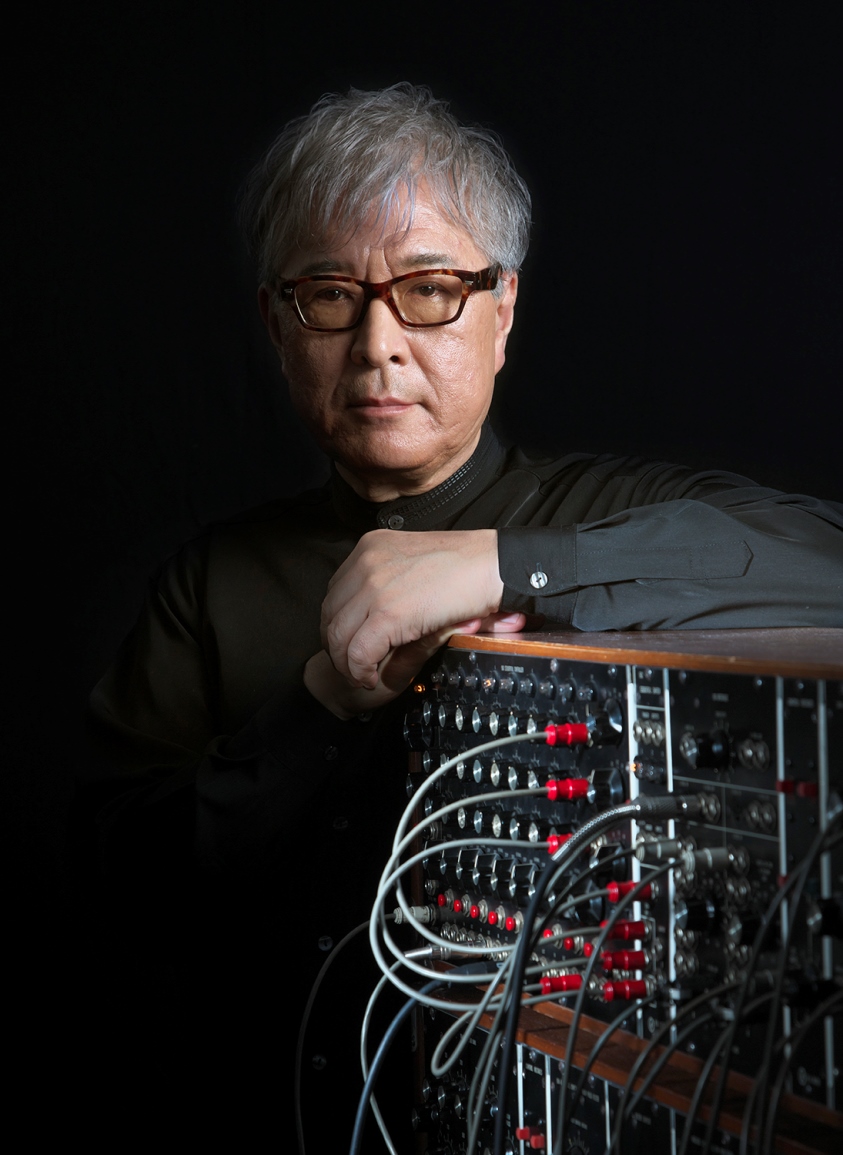
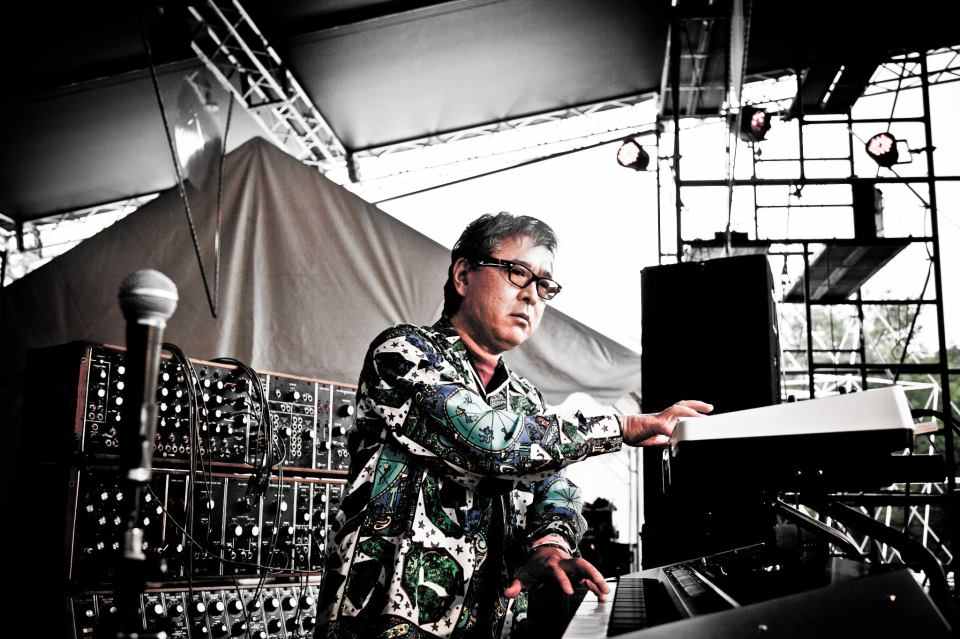
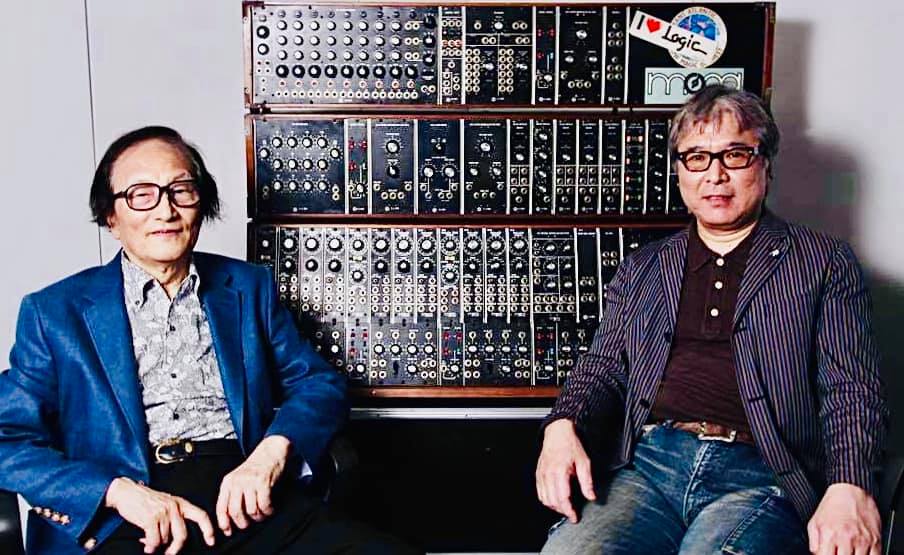
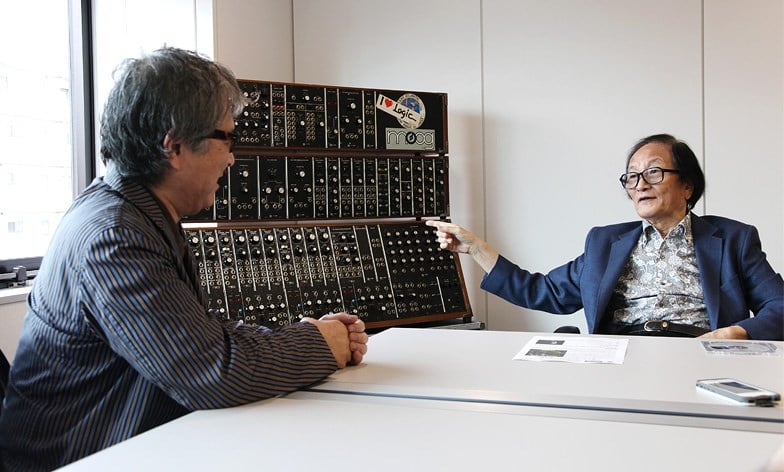
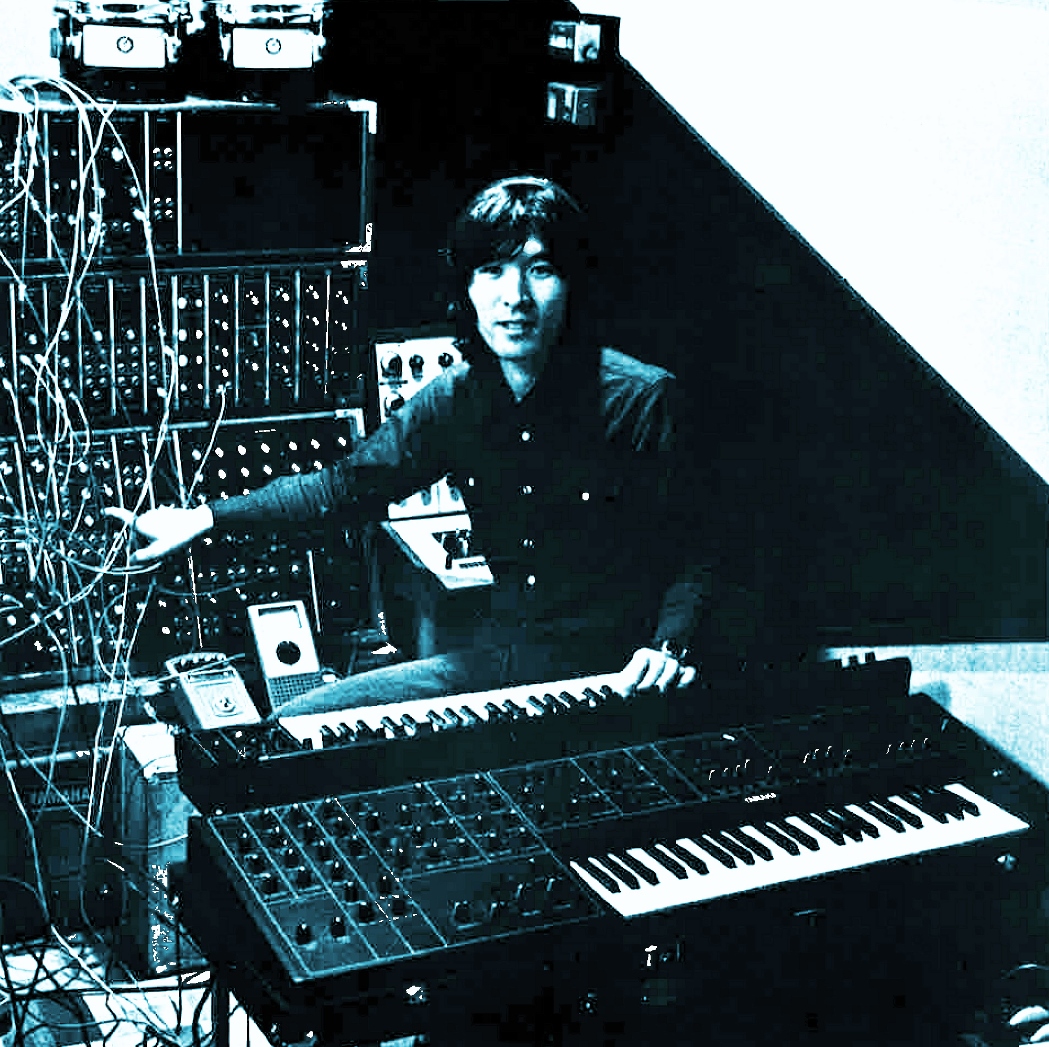
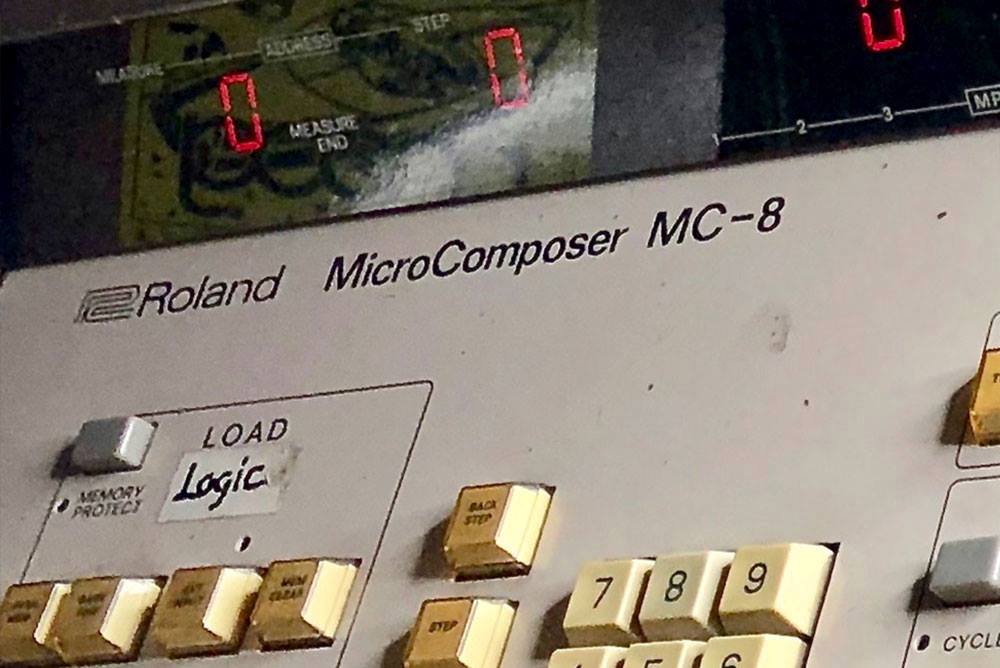
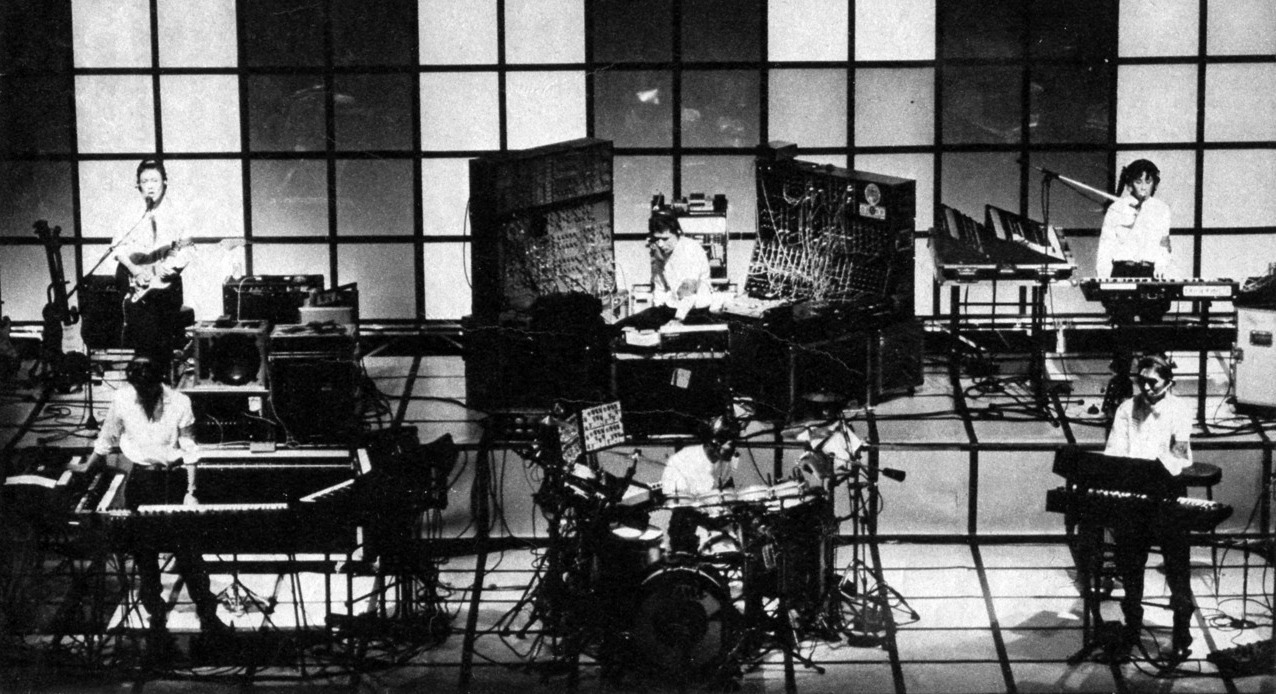
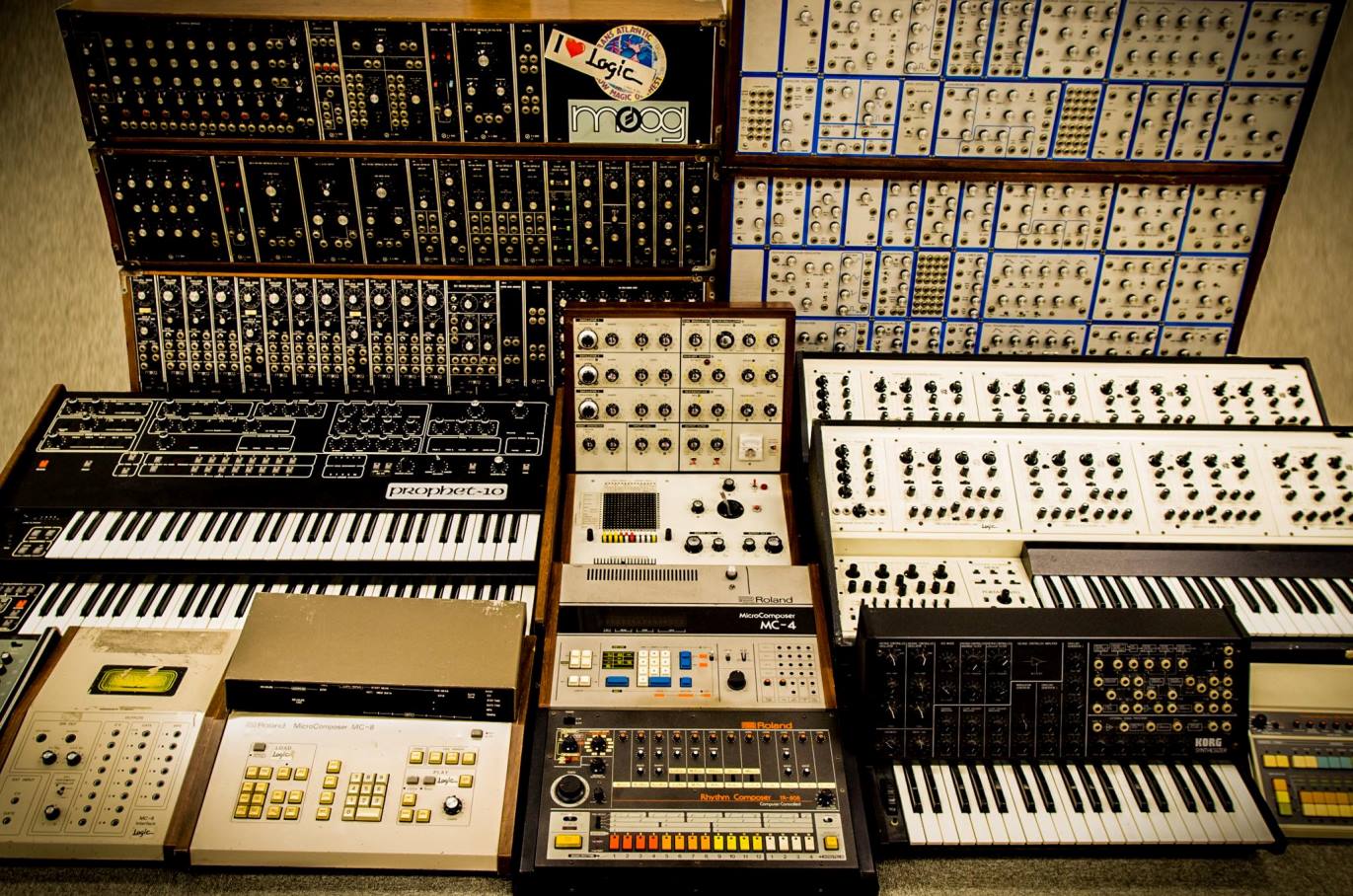
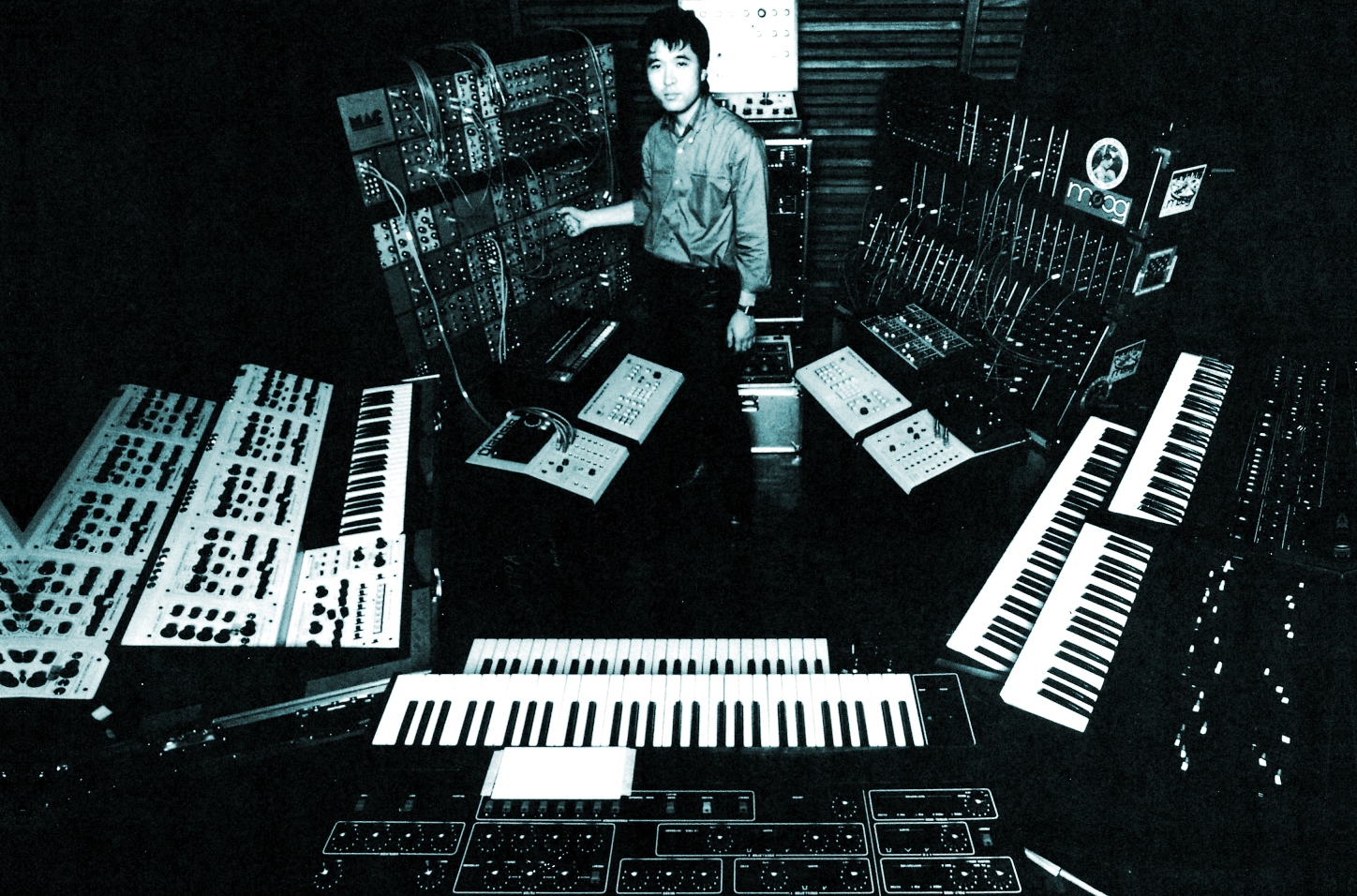
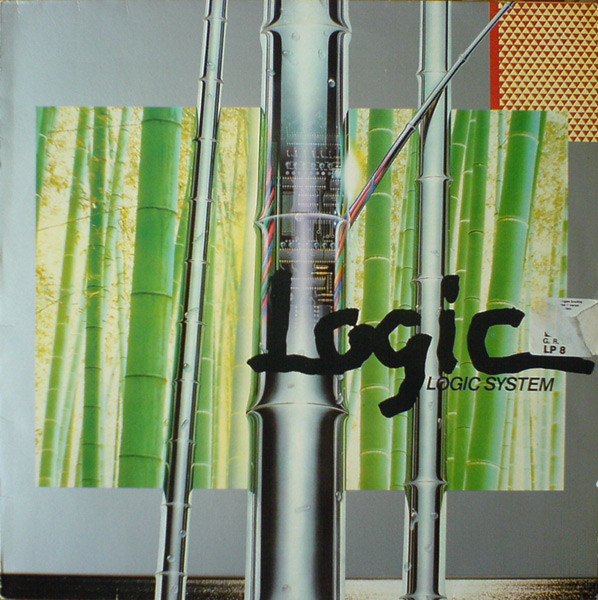
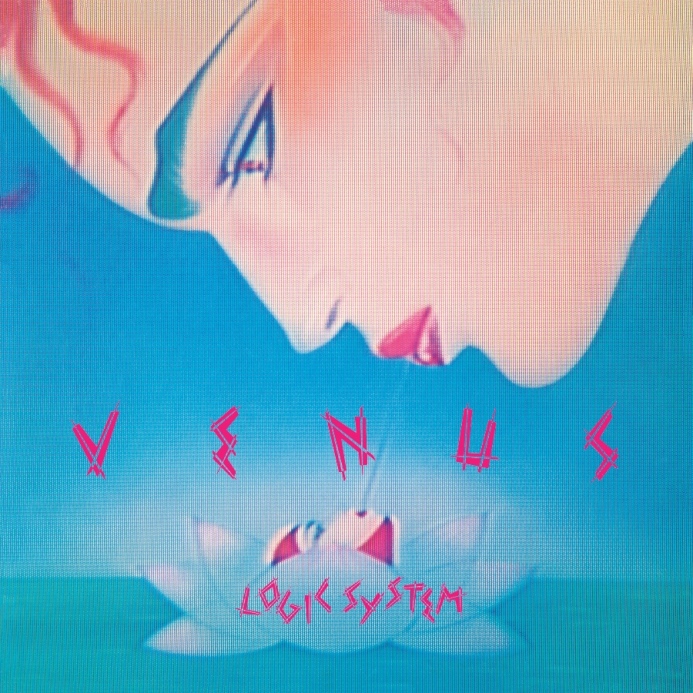
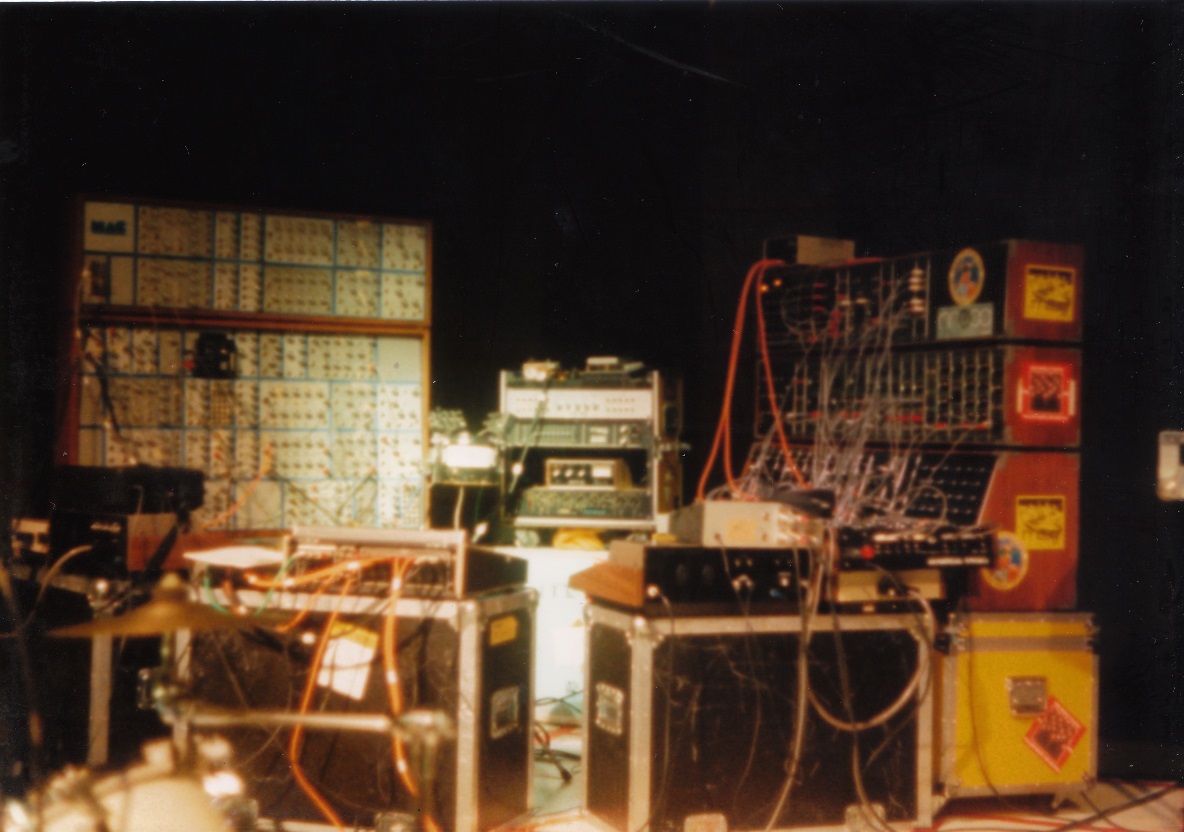
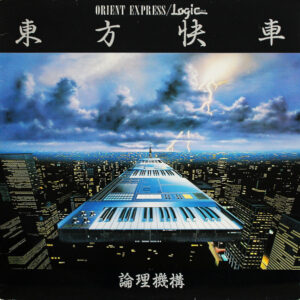
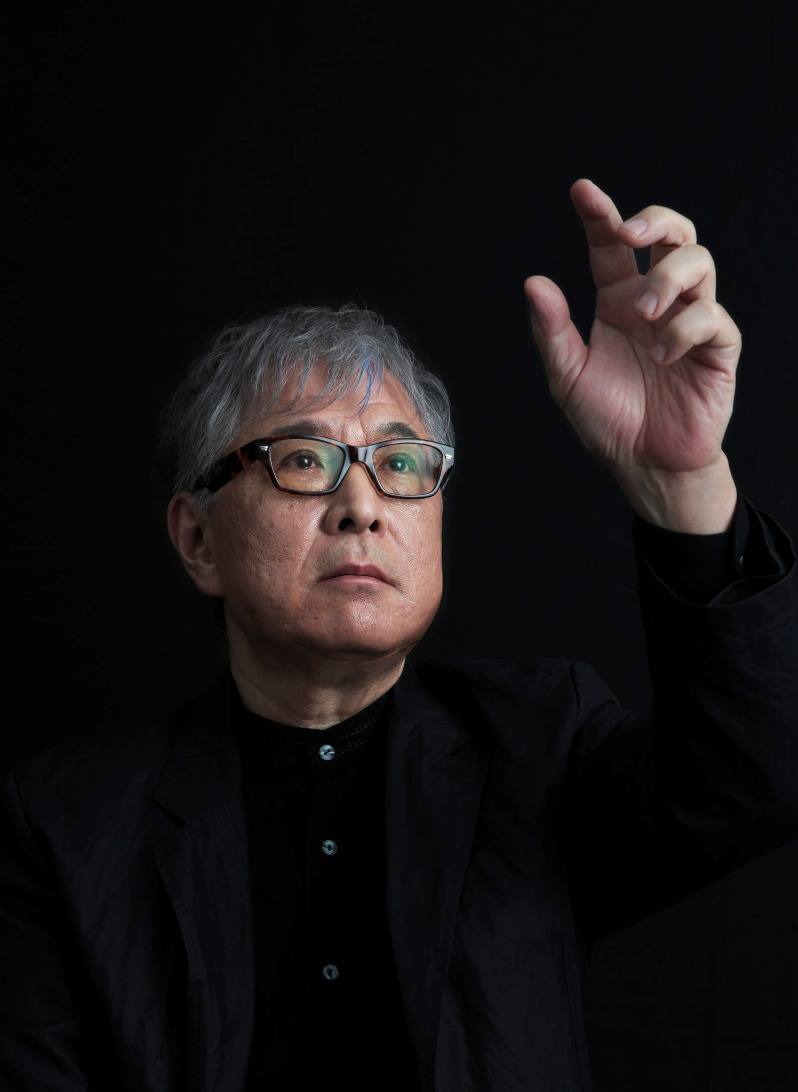
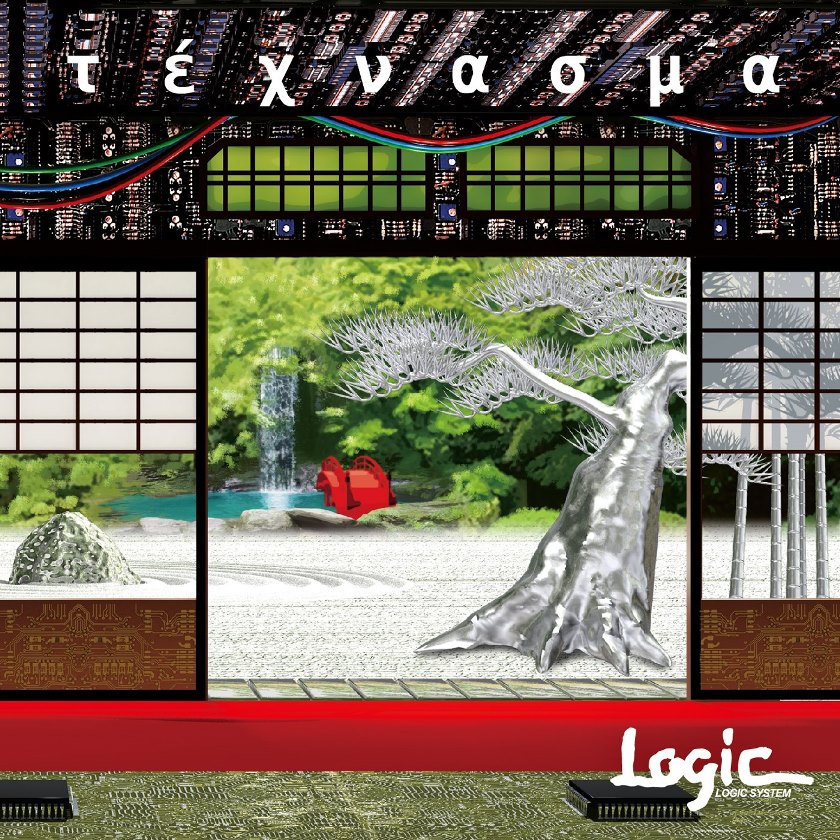
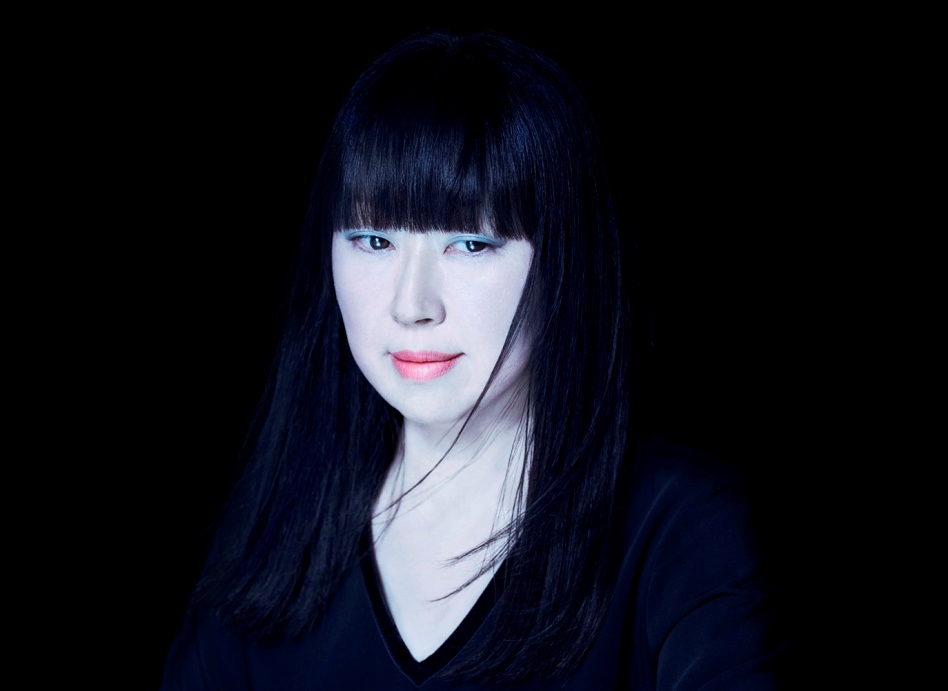
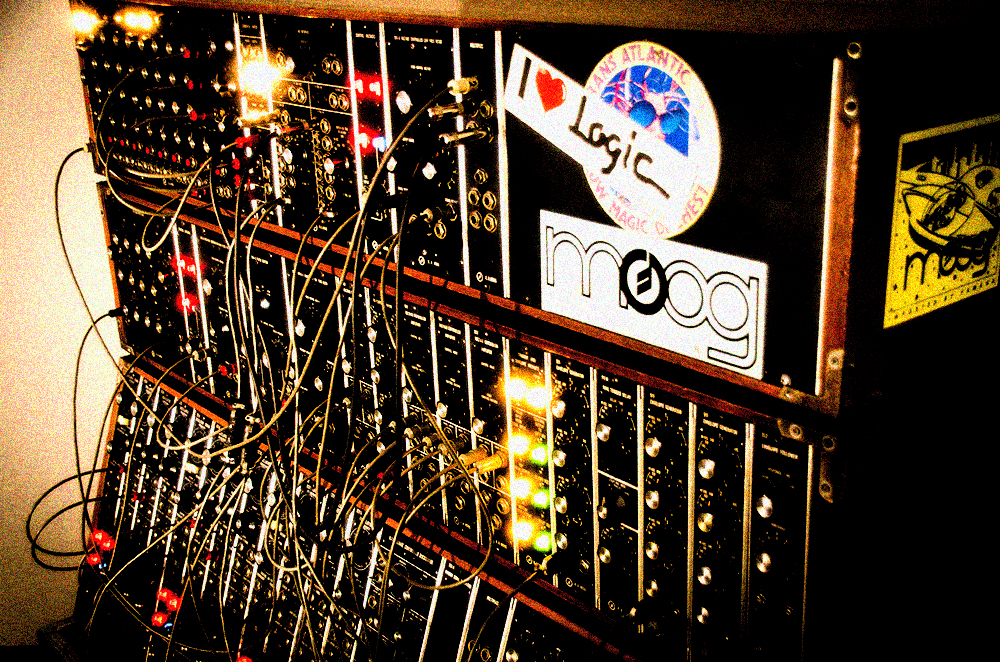
Follow Us!